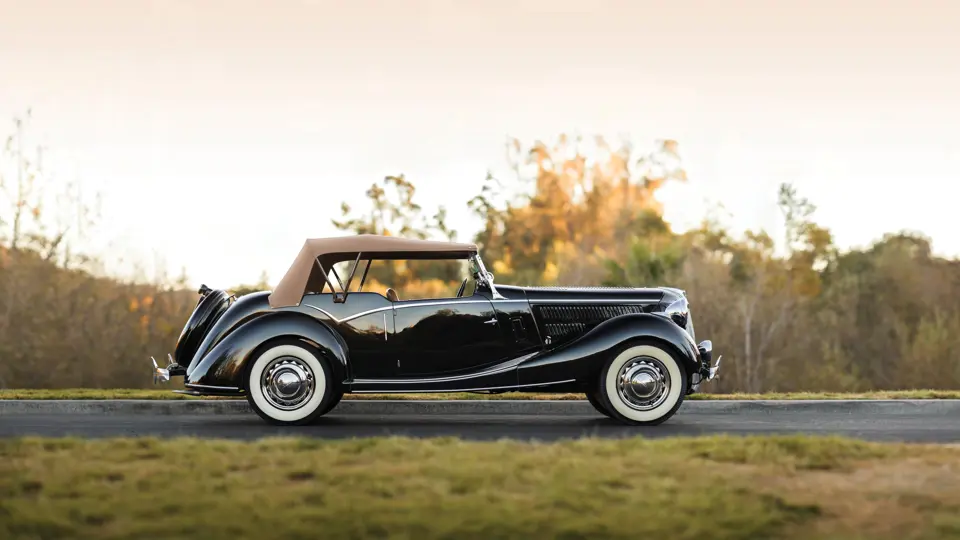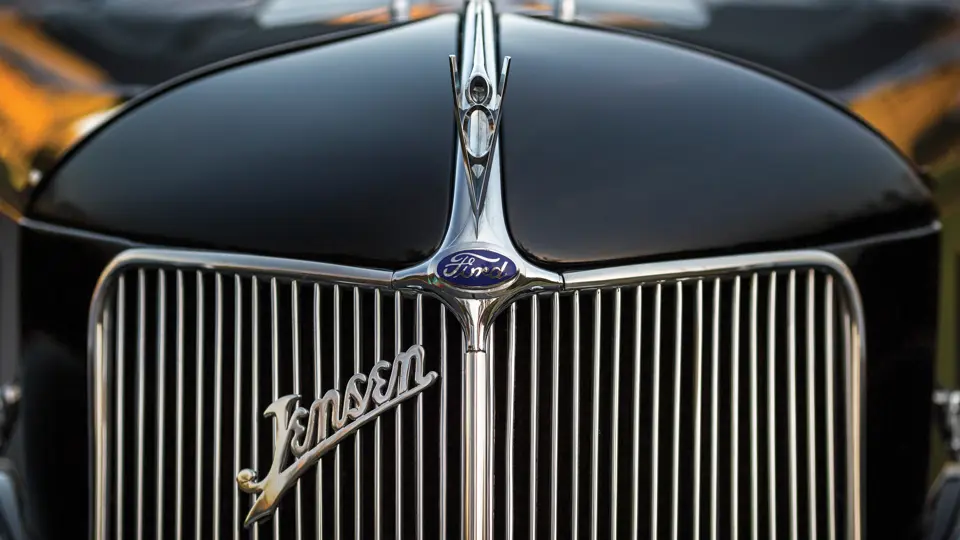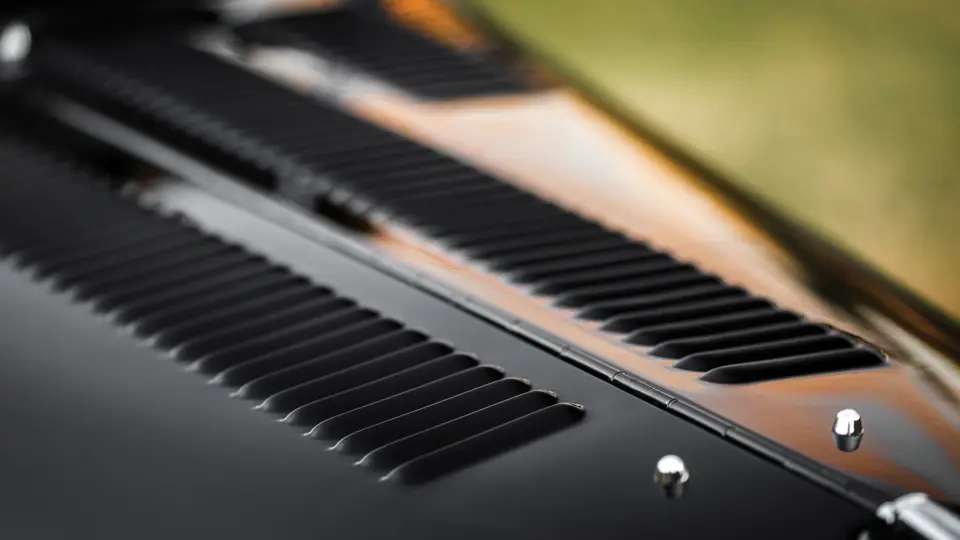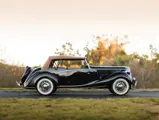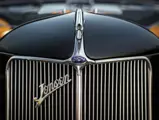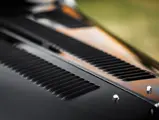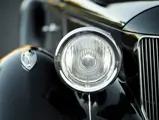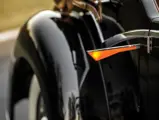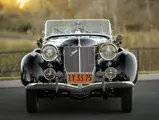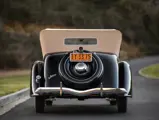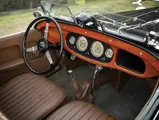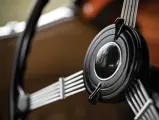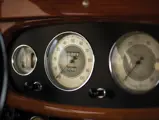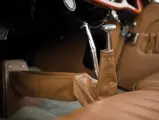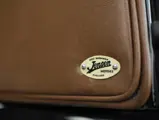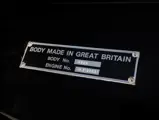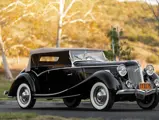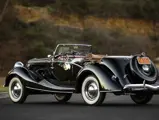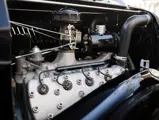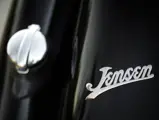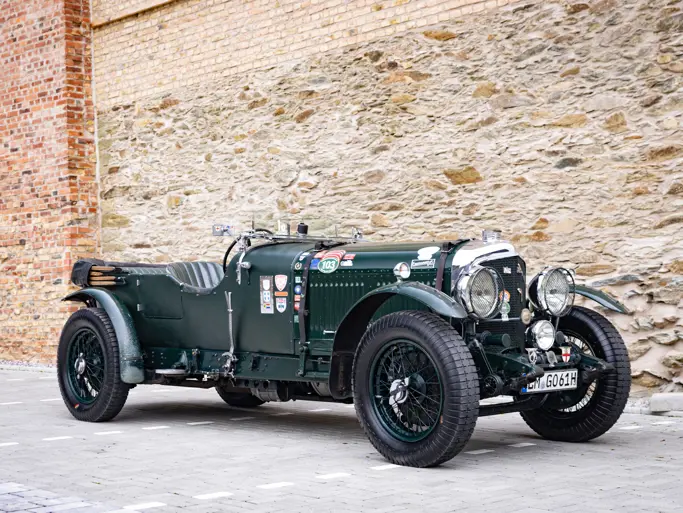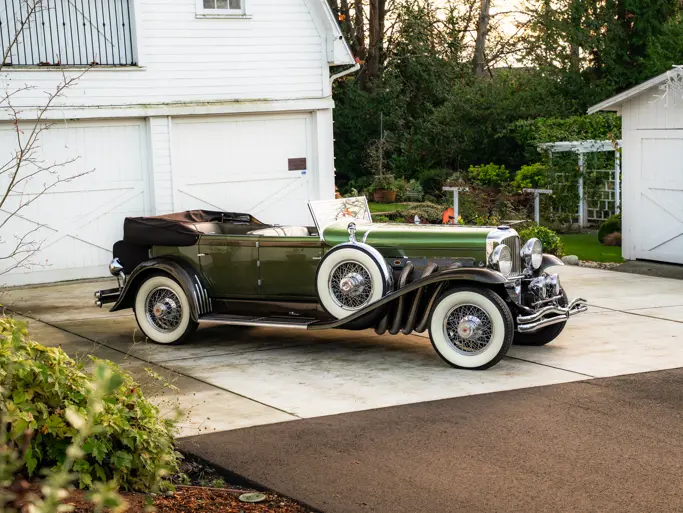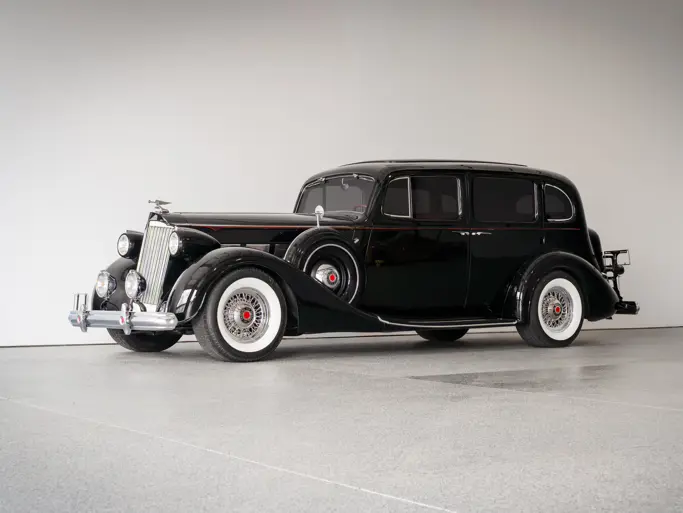
1936 Jensen-Ford Tourer
{{lr.item.text}}
$247,500 USD | Sold
{{bidding.lot.reserveStatusFormatted}}
- American Ford flathead V-8 power with handsome British coachwork
- One of only three left-hand-drive cars built for U.S. export
- Formerly owned by Mischa Auer and Art Knapp
- Well-maintained, ground-up concours restoration
85 bhp, 221 cu. in. L-head Ford V-8 engine, three-speed manual transmission, front and rear transverse leaf-spring suspension, and four-wheel mechanical brakes. Wheelbase: 112 in.
The Jensen Company is best remembered as one of the most successful British builders of what were, in the 1960s, known as “hybrids,” combining reliable American powertrains with European craftsmanship and sensual styling. Jensen is unique among manufacturers of “hybrids” in that their first American-powered sports models were produced not in the 1960s but 30 years earlier, in 1934, when brothers Richard and Alan Jensen built racing bodies for Fords running in the Tourist Trophy in Northern Ireland. This led to a small run of four-seater V-8 tourers, reportedly inspired by a special built for Edsel Ford that was produced at Edsel’s suggestion and with his support.
Perhaps 30 Jensen-Fords, as they were known, were produced between 1934 and 1936. Three of the cars were built with left-hand drive and exported to the United States through Percy Morgan, a California industrialist who had been impressed by a road report on the cars in The Autocar. Morgan first ordered two cars, one for himself and one for his friend, legendary actor and sports car enthusiast Clark Gable. Two 1936 Ford chassis were ordered through the Hollywood Ford dealer and shipped from the Ford branch in New Jersey to England for bodies.
A third car, the one offered here, was ordered for Theodore B. Wilcox Jr., the heir to an Oregon flour fortune. Wilcox was upset when production problems in the U.K. continually delayed delivery of the car. Fortunately, Gable declined to take delivery of his Jensen-Ford, and so Wilcox received that car. Meanwhile, this car eventually did arrive from England in California and was sold by Morgan to a Mr. Burlingham of Cincinnati, Ohio, a member of the prominent Burlingham Coal Company family.
According to a history of the car from former owner Art Knapp, Mr. Burlingham kept the Jensen-Ford on the West Coast and later sold it to Hollywood comedian Mischa Auer. It resurfaced in Sylmar, California, in the mid-1960s and was sold to a local businessman, Bill Owens. The car remained with Mr. Owens until 2000, at which point it was sold to Greg Schneider and then passed to Mr. Knapp.
Mr. Knapp spent six years gathering and remanufacturing correct parts for the restoration of the car, which began in earnest in 2007 and was completed in 2013, with thousands of man-hours invested in the project. The top irons, much of the shock absorbers, the dashboard, and the emergency brake system, all of which are unique to this model, were produced from scratch. In rebuilding the inner woodwork of the body, it was discovered that the two sides of the car were not mirror images of one another—typical of 1930s coachbuilding. The drivetrain, fortunately, remained intact and original and was restored to its 1936 condition.
Offered today by its most recent owner, the car has been maintained in his private collection, and it is certainly one of the most beautiful surviving Jensen-Fords, as one of the desirable trio of left-hand-drive models imported by Percy Morgan. It is a part of California sports car history and would be a desirable addition to any fine collection.

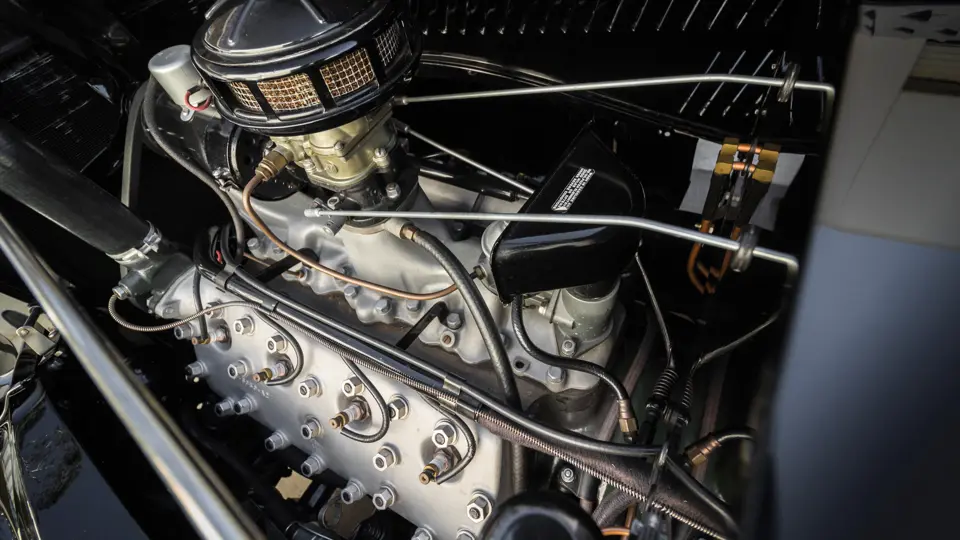
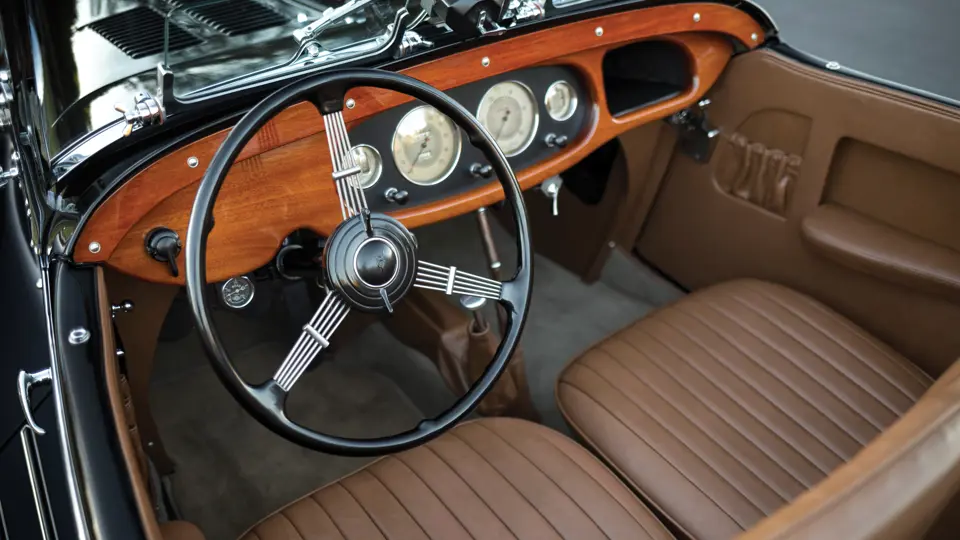

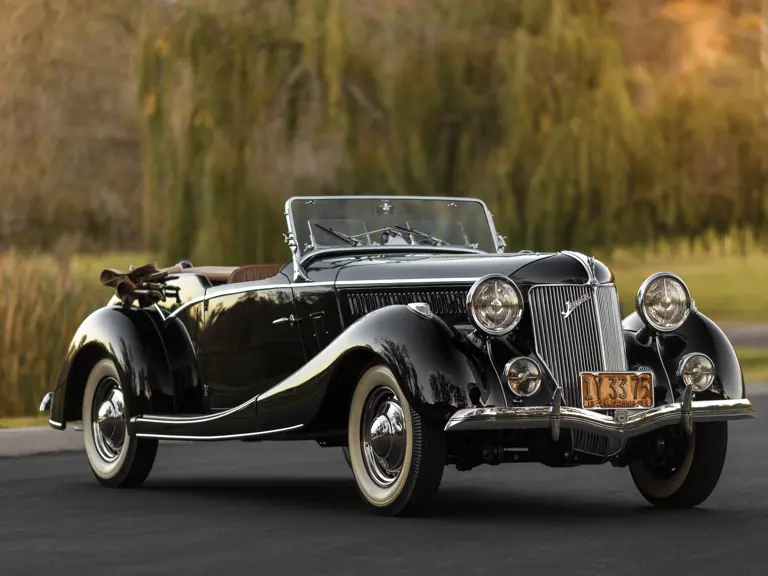

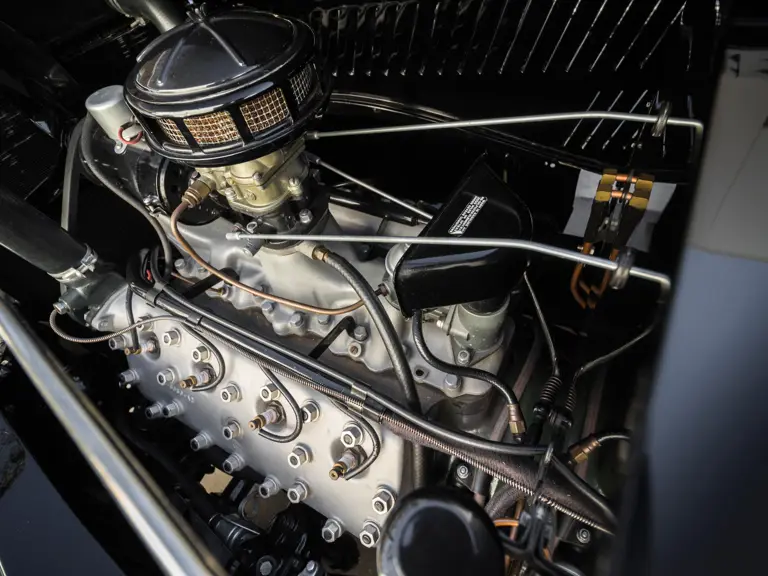
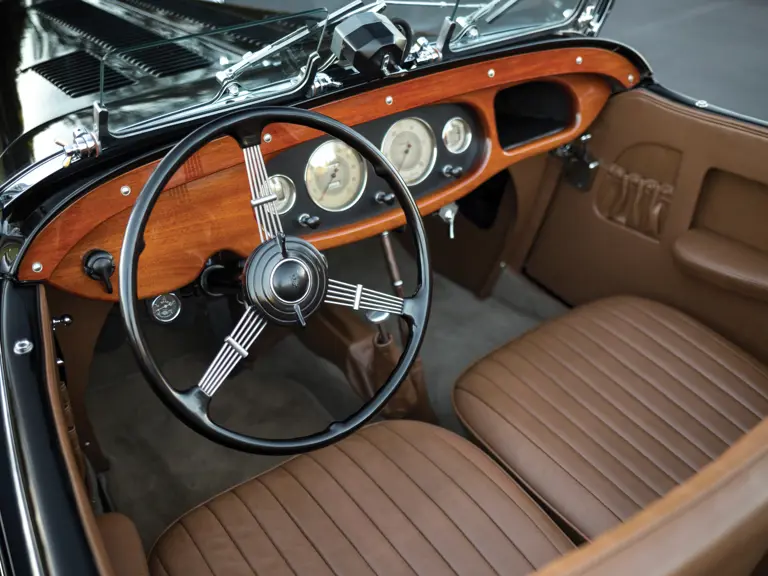
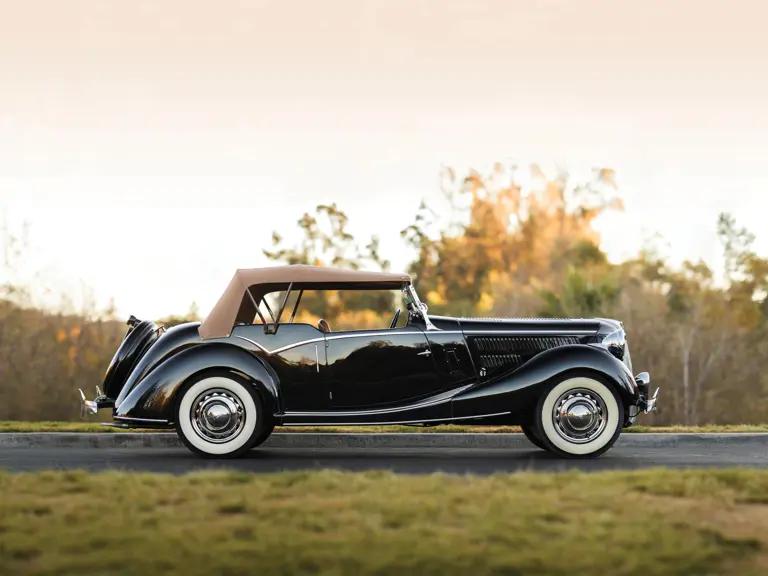

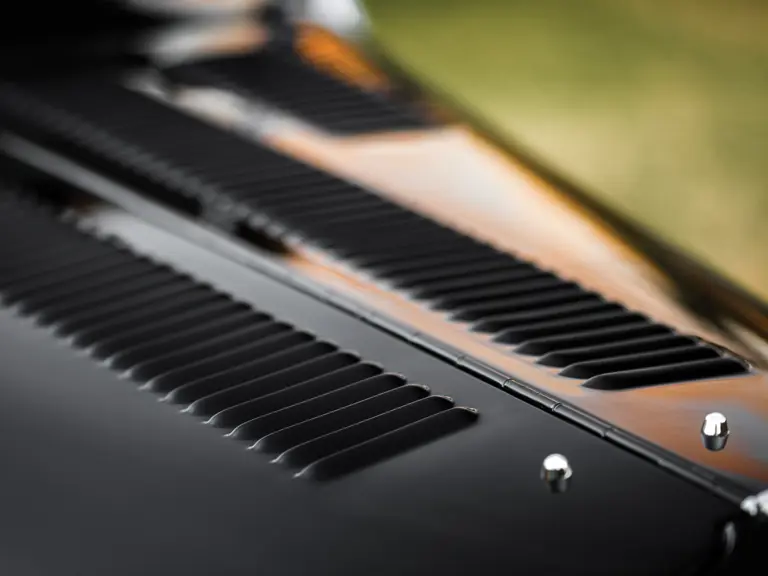
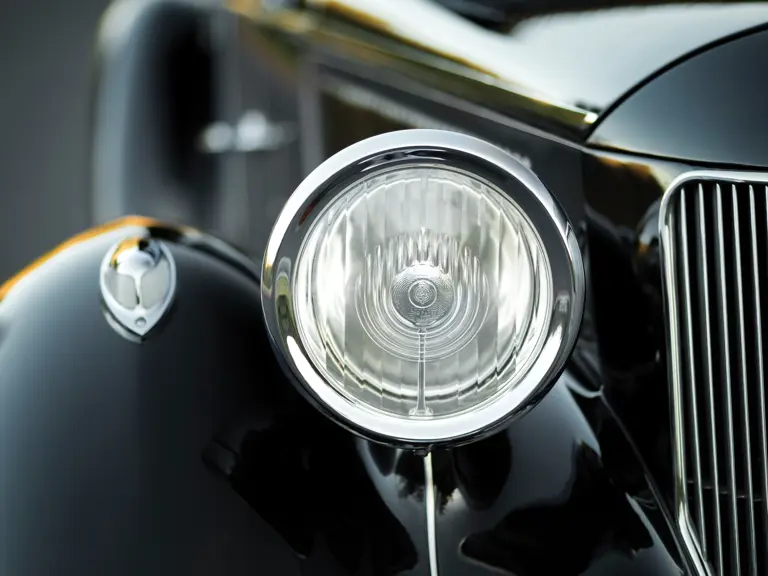
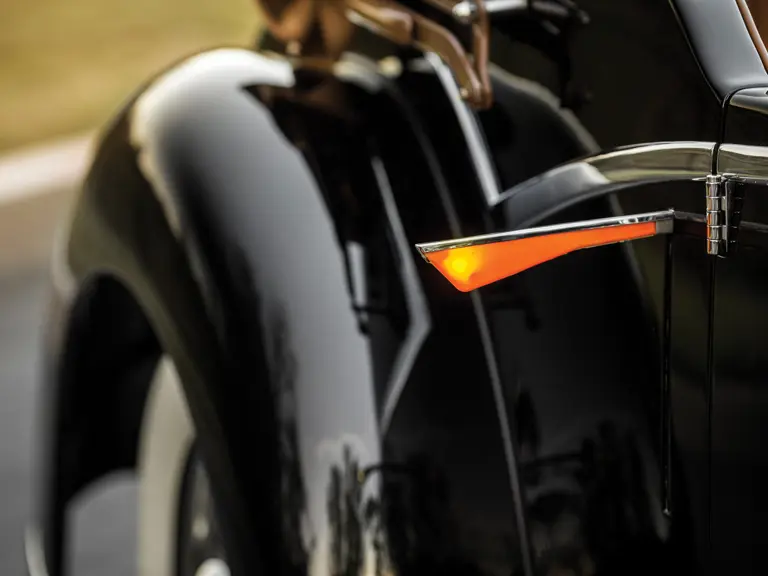
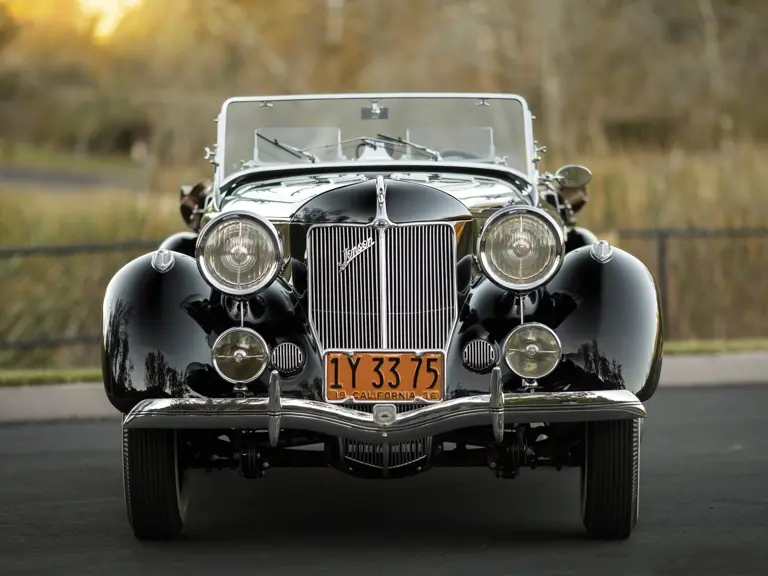
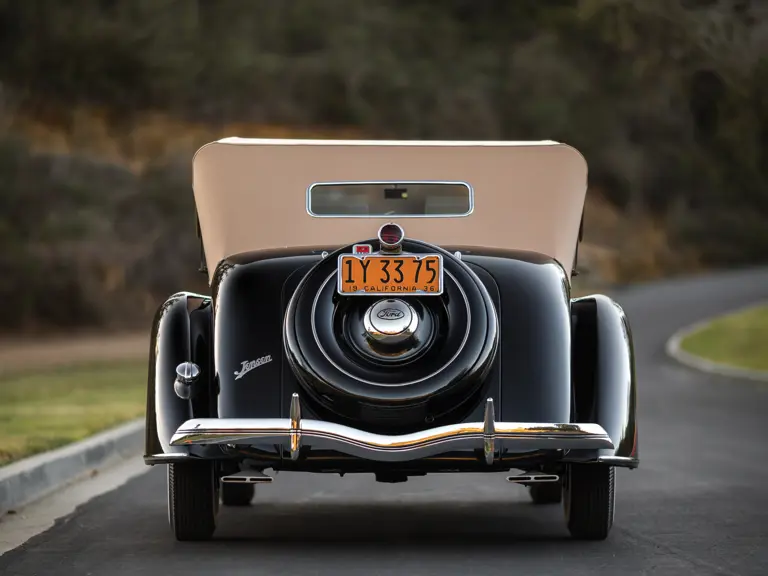
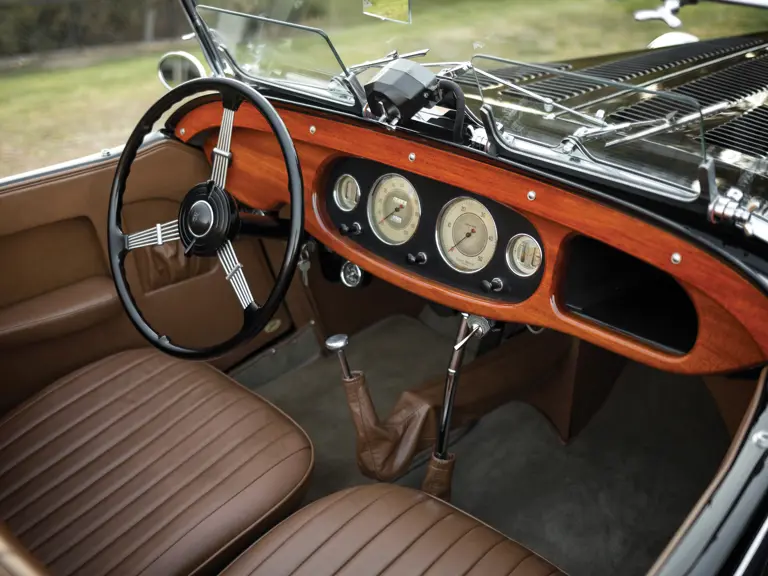
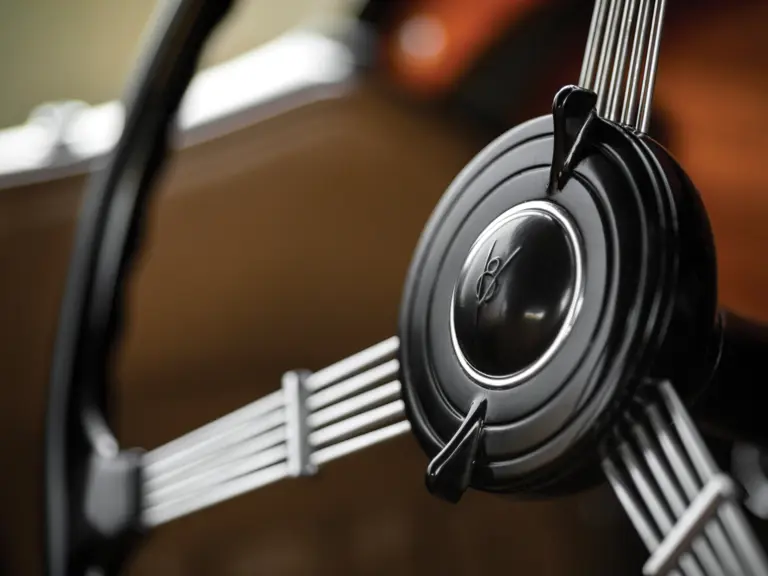
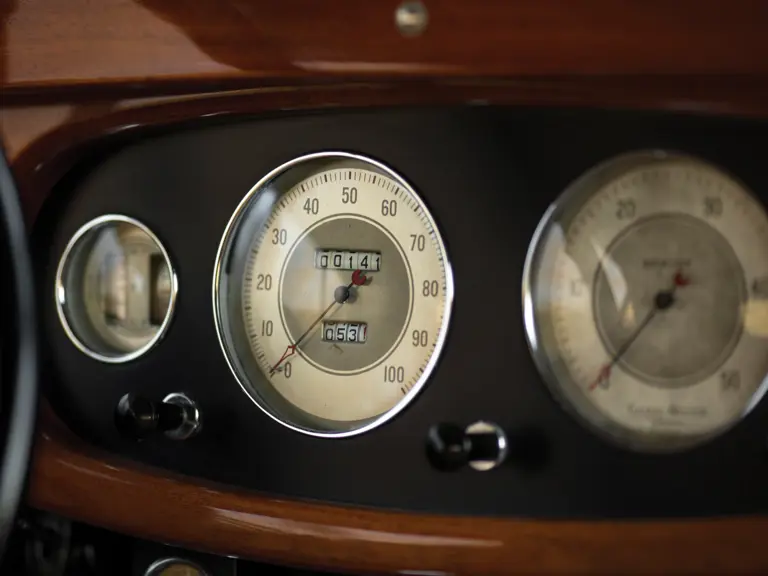
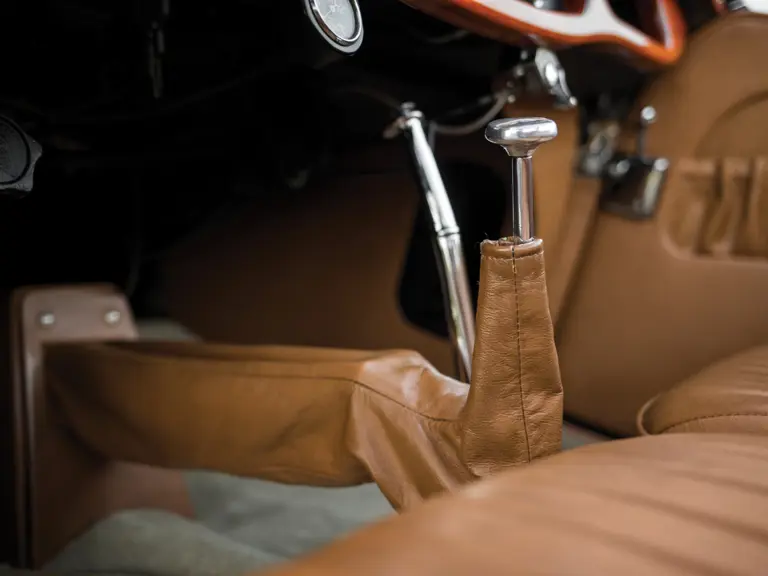
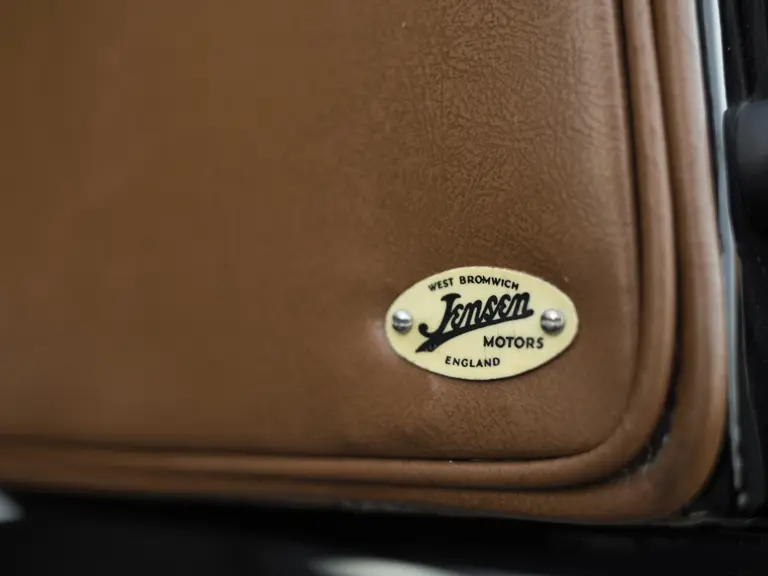
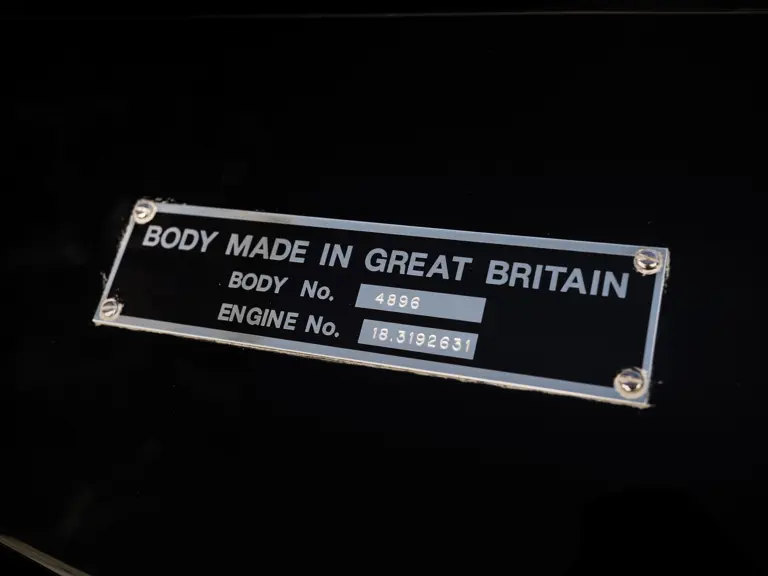
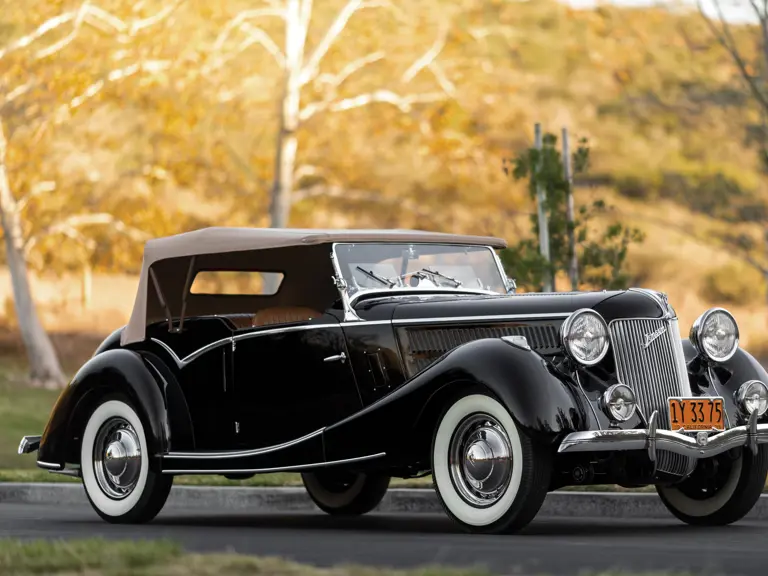
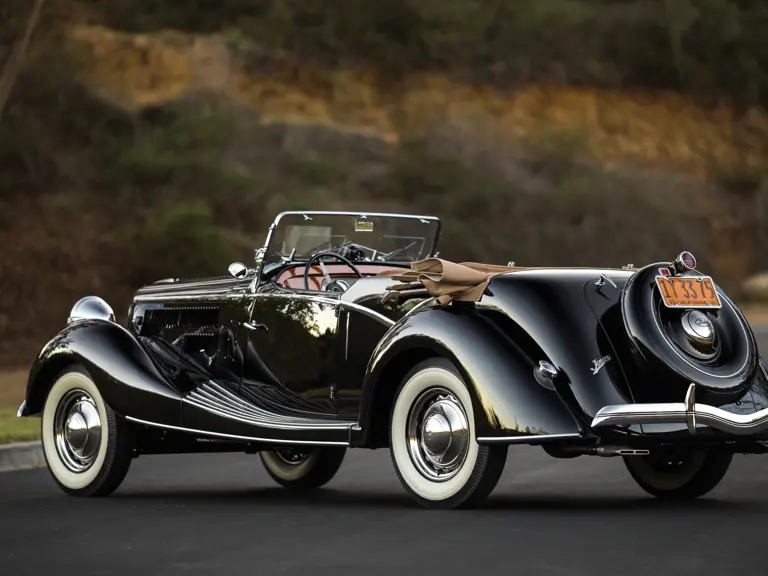
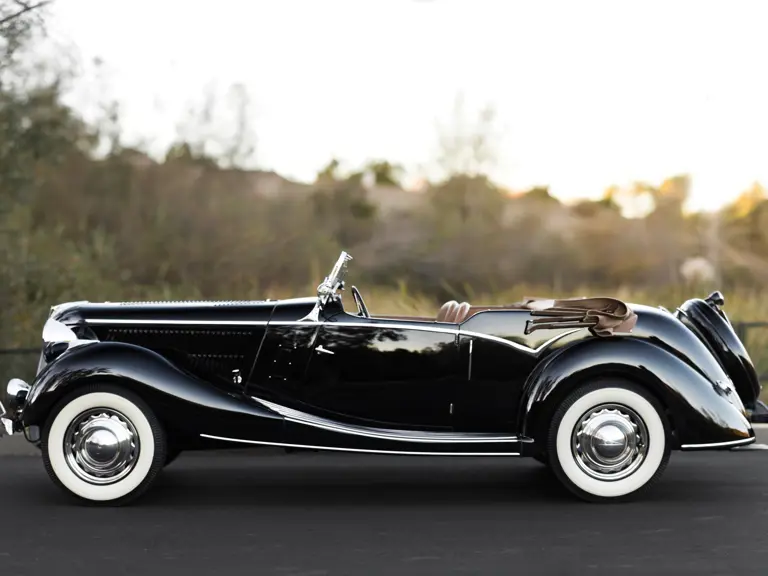

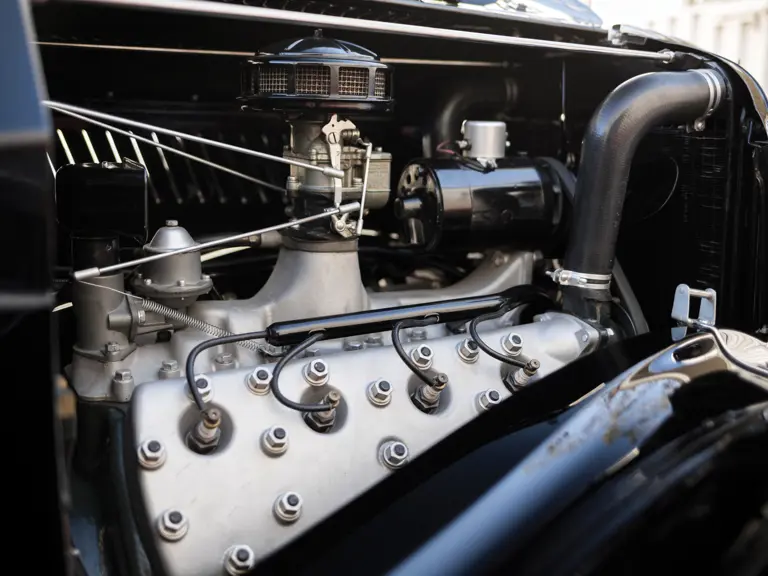
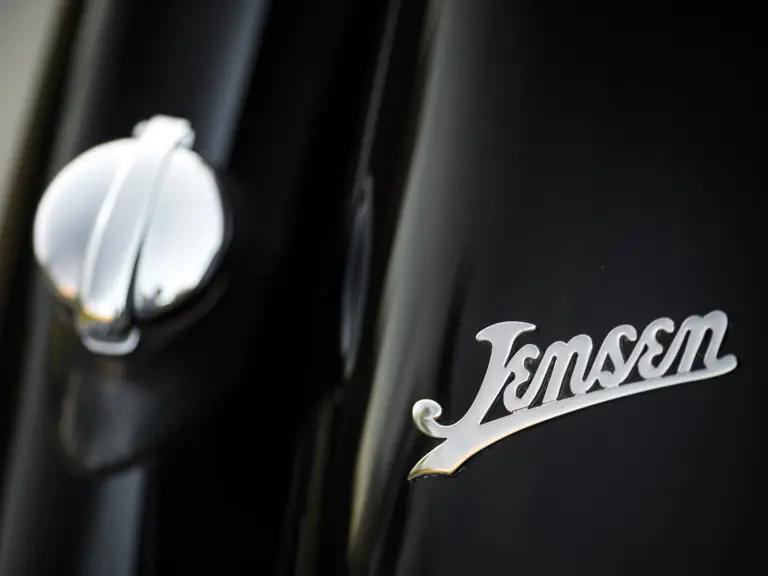
 | Phoenix, Arizona
| Phoenix, Arizona
